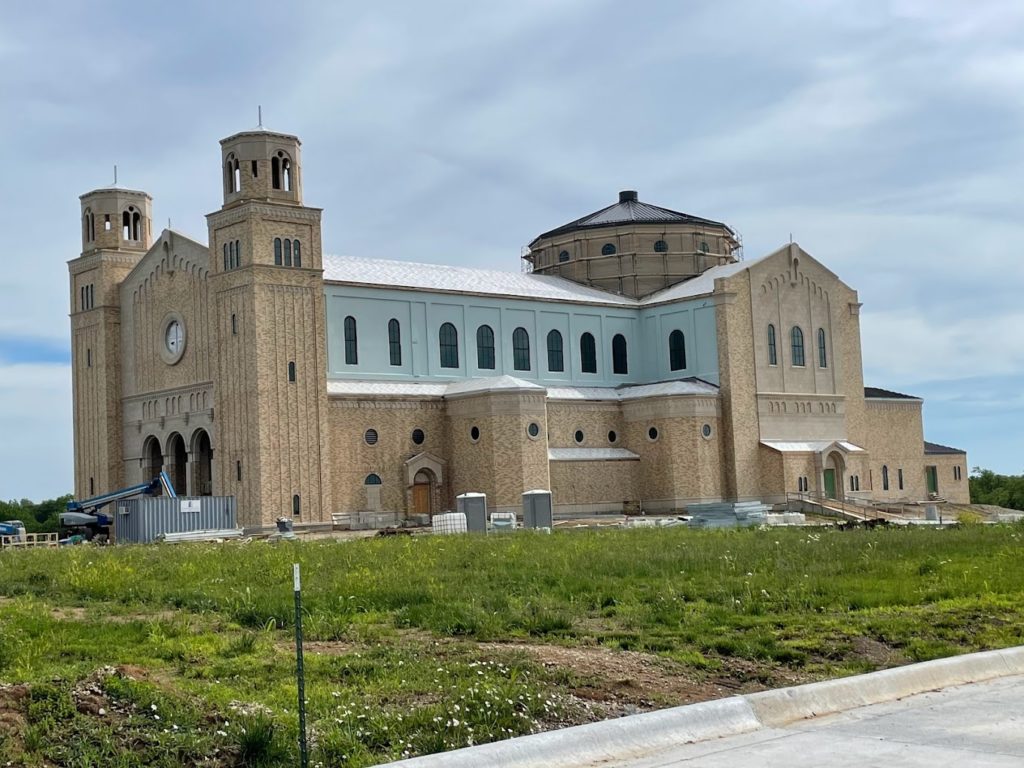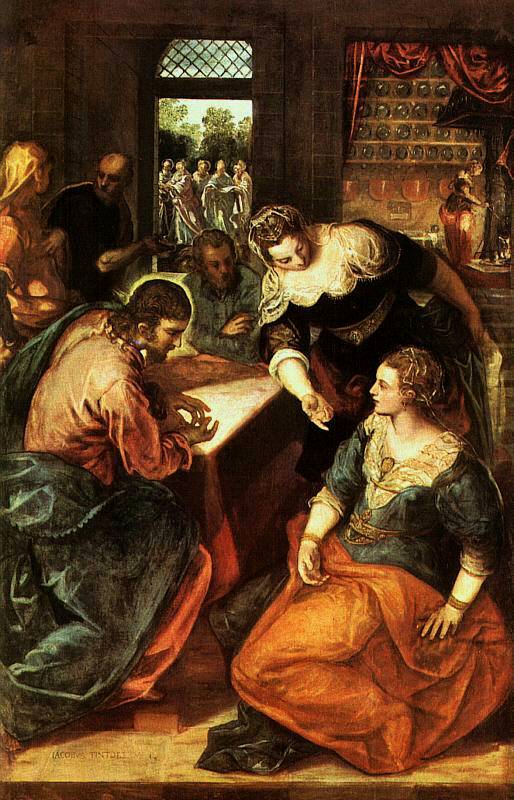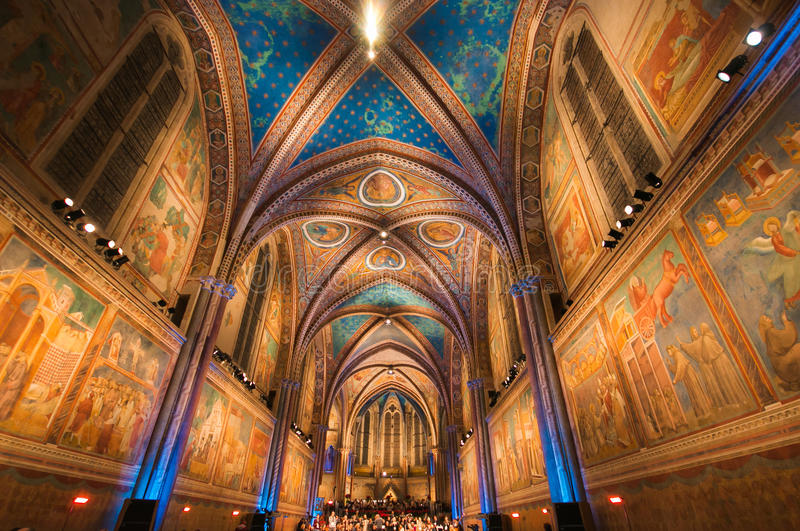No! A Beautiful Culture Helps the Poor and Generates Wealth for All
On the whole, the beauty of artifacts is a function of design rather than materials. Mass production and industrialization are not processes that automatically create ugly products. It is as easy to mass produce something beautiful as it is something ugly. The ugliness of today’s culture is not driven by economics but rather, by poor design because artists and designers are no longer aware of how traditional values are manifested in design; or else because they deliberately reject those values. A large basilica built in modern design is typically more expensive than one built in say a traditional Romanesque design, as evidenced by the recent building of the neo Romanesque church of St Mary in Kansas.

Even if the cost is greater, it is an investment that pays off economically. For example, houses that are now being built in traditional proportions typically have a higher price on the open market that more than offsets any additional costs in their building. These buildings cost more, not because designing beautifully is intrinsically more costly, but rather because the current templates of mass productions, for example, window dimensions, are not reflective of traditional harmony and proportion.
I would argue that, if we wish also to consider the souls of those who use what we create, then we must endeavor to make beautiful objects and to do so in a cost effective manner. An ‘investment’ in the souls of men will always pay off. For example, when faced with the dilemma about whether or not money should be spent on beautiful churches and sacred art, some object and say that it would be better given to the poor. This is an old but false argument that I would counter as follows:
Consider the gospel account of Martha, Mary and Judas (Luke 10: 38-42). Many will be aware of this story of the two women acting as hostesses in which Mary washed Jesus’s feet with expensive nard, while Martha attended to the other guests’ need and complained to Jesus that she was doing all the work. Judas, who was the keeper of the funds for the apostle, also complained that the money spent on expensive nard would be better given to the poor. It is usual in interpreting this story to focus on the contrast between the attitudes of Martha and Mary. However, we can also contrast the attitude of Mary with that of Judas.

Here is a lesson about allocation of resources:
Mary made the right choice, we were told, in choosing Christ even before giving to the poor. There is an equivalent choice facing us today every time we have to decide about having beautiful churches and art, intricate vestments, ornate jewel-studded chalices and so on. Is it right to direct money to these things when there is poverty? The answer is yes, when these things, through the liturgy, elevate the souls of the faithful to Christ. This is greater than giving these resources to the poor directly. Why would we say this?
First, all of us, rich or poor, can go to church and we all need our souls saved. So in church the poor benefit from this spiritually as much as the rich do. Beauty is a common-good equally available, and equally beneficial, to all who encounter it, rich and poor alike.
But second, the poor will benefit materially as well. Faith inspires charity and so it will inspire the rich to give to the poor directly. Furthermore , it will allow for the creation of greater wealth for the benefit of the poor in such a way that their dignity is elevated. This is the principle of superabundance at work. Superabundance is the creation of something out of nothing, or of more from less. The Christian life, lived according to the principle of love is always fruitful in so many ways – and when it is it invokes the principle of superabundance.
Benedict XVI speaks of this principle of superabundance through charity in the economic sphere in his encyclical, Caritas in veritate (CV). He tells us how love might be present even in the ordinary economic transaction. When it is, it not only creates wealth, as all economic transactions do, but also builds up the dignity of all concerned, for even economic transactions suffused with love are raised to a level that goes beyond the material. A community is created which through every interaction, including the economic, builds up the dignity of those involved and in turn generates greater material wealth by encouraging more economic activity.
Benedict writes:
“Because it is a gift received by everyone, charity in truth is a force that builds community, it brings all people together without imposing barriers or limits. The human community that we build by ourselves can never, purely by its own strength, be a fully fraternal community, nor can it overcome every division and become a truly universal community. The unity of the human race, a fraternal communion transcending every barrier, is called into being by the word of God-who-is-Love. In addressing this key question, we must make it clear, on the one hand, that the logic of gift does not exclude justice, nor does it merely sit alongside it as a second element added from without; on the other hand, economic, social and political development, if it is to be authentically human, needs to make room for the principle of gratuitousness as an expression of fraternity.
“35. In a climate of mutual trust, the market is the economic institution that permits encounter between persons, inasmuch as they are economic subjects who make use of contracts to regulate their relations as they exchange goods and services of equivalent value between them, in order to satisfy their needs and desires. The market is subject to the principles of so-called commutative justice, which regulates the relations of giving and receiving between parties to a transaction. But the social doctrine of the Church has unceasingly highlighted the importance of distributive justice and social justice for the market economy, not only because it belongs within a broader social and political context, but also because of the wider network of relations within which it operates. In fact, if the market is governed solely by the principle of the equivalence in value of exchanged goods, it cannot produce the social cohesion that it requires in order to function well.” (CV, 34)
A Church whose liturgy inspires holiness will inspire an atmosphere of mutual trust that Benedict speaks of.
During his papacy, Pope Francis has made headlines with regular calls to charity towards the poor, citing St Francis of Assisi as a model. To this day, the Franciscan order is characterized by a mission of charity for the poor. But it should not be forgotten that St Francis was commissioned by God to rebuild Christ’s Church and he did both lovingly and beautifully, for both missions, ministering to the poor and building up the Church, are connected. We must not forget that the regeneration of the Church that St Francis of Assisi inspired involved a powerful cultural renewal too. This was the Church that inspired Franciscans to help the poor. So many of the great artists from the time of Francis were third order Franciscans or were commissioned by Franciscans to work on their churches – Giotto, Cimabue, Simone Martini, Raphael, Michelangelo. There is no austerity in the Franciscan churches of the past – the basilica at Assisi is richly decorated from floor to ceiling.

If we are to help the poor of America we begin as the Fransciscan did in medieval Italy, by transforming the Church into one that has beautiful liturgy and beautiful art, architecture. This will in turn evangelize the culture and change all men’s hearts so that they are more inclined to help the poor as part of their own community. It will also create a national culture that will foster the rise in mutual trust by which the economy will grow in such a way that the poor will have jobs and greater dignity; in other words, they will cease to be poor.
From the Beauty | David Clayton | Giotto | Martha and Mary | St Francis of Assisi | Superabundance | Utility series
View more Posts